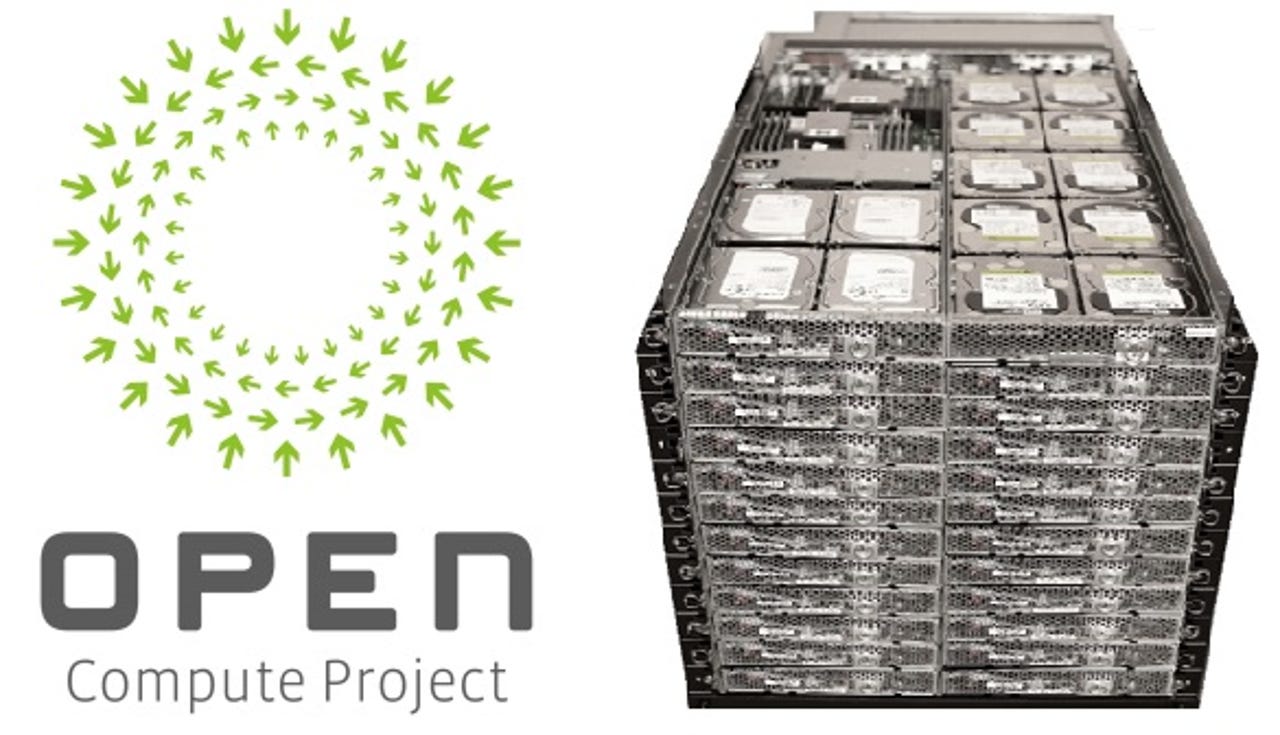Open Compute Project: Gauging its influence in data center, cloud computing infrastructure


The Open Compute Project holds its summit in San Jose this week and the effort, which revolves around making data center components and designs more efficient and interoperable, has notched a few wins in its nearly 5-year history, but the real accomplishment revolves around influence.
OCP was announced in April 2011 out of Facebook's data center designs and when you run down the accomplishments there's one big conclusion to draw: OCP's major win is that it shifted the conversation about hardware, vendors and customers.
A few accomplishments from OCP include:
- The group has sparked a running dialogue between most of the heavy hitters in the data center.
- HP launched a white-box option to cater to the Open Compute crowd.
- Discussion about the OCP effort has helped speed up software-defined networking and storage approaches in corporate data centers.
- Hardware vendors have drawn design inspiration from the group and giants like Microsoft are using them in its own data centers.
- A byproduct of the supporters of OCP and key players has sped up the high-performance computing effort inside companies.
- And OCP's thinking probably sparked the hyperconverged system movement, which revolves around one box offering networking, storage and compute.
I could go on even though drawing direct lines between OCP's efforts and real commercial approaches is a bit tricky. I don't run into many enterprise bigwigs actively talking about OCP beyond a pilot once in a while. Why? Most companies aren't running cloud-scale data centers where OCP is most relevant.
That reality gets me to the real win for OCP--influence. OCP has influenced many vendors to adopt the concepts in part and pass them along to customers. As a result, OCP has made hardware infrastructure more open and less likely to lock you in.
Previously: Facebook wants to do to 5G what it has already done to the datacenter | Open Compute Project enlists AT&T, Verizon while growing telco support | Microsoft demonstrates its Linux-based Azure Cloud Switch operating system | Facebook unveils SoC, open hardware, software framework for data centers | Open Compute Project: Converged infrastructure promise without lock-in?
For instance, I'd argue that Cisco wouldn't have its ACI and more open approach to managing hybrid data center deployments if not for OCP. Sure, VMware's move into software-defined everything has something to do with it, but OCP played a role too.
Cisco couldn't let some open compute software-defined networking approach to go crazy. Cisco gave its customers what it wanted and therefore kept them in the fold. Cisco joined OCP in 2014 in a surprise, but its approach is simple: Contribute some, learn and monitor.
Would HP have offered a white box option without OCP? Doubtful. Lenovo joined the OCP last month and said the move is an "extension of its hyperscale business strategy."
Most vendors have acknowledged that their hardware systems have to interconnect and be more open. OCP had a lot to do with that approach.
The agenda for OCP's powwow this week features such headliners as Facebook's Open Rack infrastructure, software defined storage, APIs for networking systems, firmware standards, power management and HPC clusters.
Simply put, if software is eating the world someone forgot to tell the OCP and its members. An open compute approach hasn't resulted in any massive commercial hits for hardware vendors, which are relieved because OCP translates into commodity boxes with thin margins. But don't confuse commercial success for influence in the data center conversation. Through that lens, OCP has already accomplished a good bit for enterprise tech buyers.
ZDNet's Monday Morning Opener is our opening salvo for the week in tech. As a global site, this editorial publishes on Monday at 8am AEST in Sydney, Australia, which is 6pm Eastern Time on Sunday in the US. It is written by a member of ZDNet's global editorial board, which is comprised of our lead editors across Asia, Australia, Europe, and the US.
Previously on the Monday Morning Opener:
- VR is the next big thing, whether you can see it or not
- For simplicity and security, Apple needs to draw a line now to prevent further ones
- Will Galaxy S7 keep Samsung in pole position?
- A call for more cloud computing transparency
- Microsoft and mobile: The headache that won't go away
- If a smartphone vendor acquiesces to anti-encryption laws, don't use them
- Why it's time to give Twitter back to the community
- Business, tech leaders' challenge : Finding innovation that matters
- Amazon's 2016: Five key cloud, e-commerce questions
- Tech predictions 2016: 4 business trends to watch
- The 5 trends that rocked business tech in 2015
- The state of enterprise software: 5 lessons